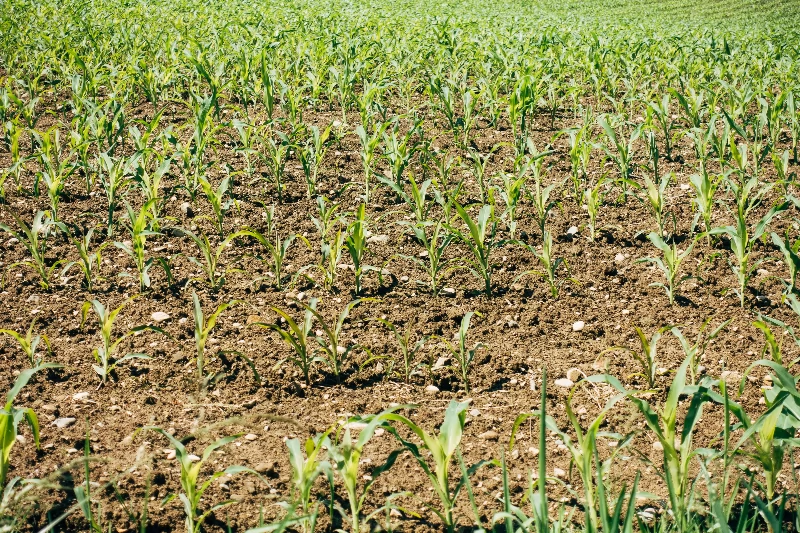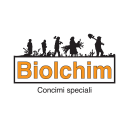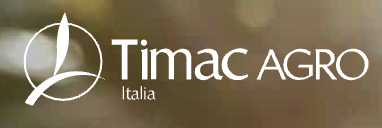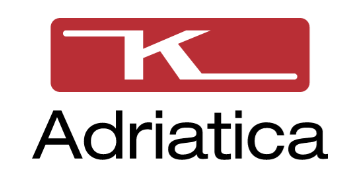Sintesi
The global fertilizer market, valued at approximately USD 201.45 billion in 2022, grew up to around USD 261.81 billion in 2023, and is expected to continue growing with a CAGR of about 3.33% from 2023 to 2030. Italy, heavily reliant on Russian and North African sources for fertilizer imports, experienced a rapid increase in import values by 109.9%, and a growth in exports by 89.8% between 2018 and 2022. The domestic market responded with a 57.9% rise in producer prices and a staggering 106% hike in consumer prices for farmers between 2021 and October 2022. Italy's biostimulants market is valued at 200 million euros, with a 10% annual growth rate, while regulatory changes at the EU level are aiming to reduce chemical fertilizer usage by 20%. The Italian fertilizer manufacturing sector saw a 6% increase in the number of employees from 2018 to 2022, indicating market concentration despite a decrease in the number of enterprises.
Navigating the Fertilizer Market Dynamics in Italy
In Italy, the fertilizer market presents a landscape where adherence to plants’ nutritional needs, driven by the imperative for high agricultural yields to meet the burgeoning global food demand, shapes consumption and trade. The Italian fertilizer market experienced significant trade flow dynamics between 2018 and 2022, with imports growing by more than 100 percent and exports also displaying considerable growth. The country's reliance on major North African and Russian sources for nitrogen (N), phosphorus (P), and potassium (K) is evident, with imports from these regions representing a substantial portion of Italy’s supply. Among the notable trends observed in the Italian fertilizer scenario are the market turnovers for fertilizer manufacturing and chemical trading sectors. By 2021, the fertilizer manufacturing market achieved a turnover in the realm of approximately 2 billion euros, while the chemical trade sector soared to over 20 billion euros, indicating a pronounced disparity in market size while also highlighting the sector's growth compared to the previous year. The Russo-Ukrainian War, which started in February 2022, delivered a palpable impact on the Italian fertilizer market, especially considering Italy's dependence on imports from these nations.
Key Players in the Fertilizer Market
As the global demand for food escalates, the fertilizer market plays a critical role in boosting agricultural productivity. Several companies have emerged as prominent players, shaping the landscape of this burgeoning industry. In this chapter, we delve into the profiles of the major market participants that are pivotal in driving innovation and meeting the world’s nutritional needs.
Biolchim S.p.A.: This Italian-based company has carved out a niche in the market through its cutting-edge biostimulant products designed to enhance plant growth and productivity while maintaining an eco-friendly profile.
Algio S.p.A.: Algio S.p.A. distinguishes itself with its considerable market share and expertise. Founded in 1980 in Reggio Emilia, Algio has become a central node in the supply chain, playing a crucial intermediary role between fertilizer manufacturers and the agricultural sector.
TIMAC AGRO Italia S.p.A.: Part of the global Groupe Roullier, TIMAC AGRO Italia S.p.A. brings a wealth of innovative solutions for plant nutrition that tread softly on the environment. Their commitment to research and development has delivered a portfolio of advanced fertilizers that cater to the evolving requirements of sustainable agriculture.
SIPCAM Italia S.p.A.: SIPCAM Italia S.p.A.'s reputation in agrochemicals is well-established. Their offerings cover an extensive range of products, including plant protection and nutrition solutions.
Pastorelli S.p.A.: With beginnings in 1992, Pastorelli S.p.A. has established itself as a seasoned supplier of fertilizers. Based near Stradella, the company’s proficiency extends to providing equipment and support for viticulture, reinforcing its status as a versatile presence in the agricultural supply chain.
Circolo Agrario Friulano Societa' Cooperativa: This cooperative boasts a legacy that spans over six decades. Circolo Agrario Friulano has built a strong community of active members and has significantly grown from its humble beginnings. Its extensive experience makes it one of the key regional players in the fertilizer distribution market.
per comprendere questo mercato
Dettaglio del contenuto
 Informazioni
Informazioni
- Pagine : 30 pags
- Formato : Versione PDF e digitale
- Ultimo aggiornamento : 17/04/2024
 Riepilogo ed estratti
Riepilogo ed estratti
1 Market Overview
1.1 Definition and presentation
Like all living things, plants have certain nutritional needs that must be met to ensure their proper development. Four distinct needs have been scientifically identified: potassium(K), nitrogen(N), oxygen(O) and phosphorus(P). Although oxygen is naturally present in the air, it is often necessary to ensure the supply of the other three elements to ensure regular and high yields.
Nitrogen, potassium and phosphorus are therefore the basis for chemical fertilizers, usually called "NPK fertilizers." These fertilizers are also called mineral fertilizers. Another category of fertilizers is natural or organic fertilizers (produced from plant or animal matter).
Fertilizers are used to fertilize the soil. The goal is to increase agricultural yields to meet the world's growing demand for food.
The size of the global fertilizer market was about US$201.45 billion in 2022 and is expected to grow to about US$261.81 billion by 2023, with a compound annual growth rate (CAGR) of about 3.33 percent between 2023 and 2030.
1.2 The world market is growing strongly
The global fertilizer market size was about USD ***.** billion in **** and is expected to grow to about USD ***.** billion by ****, with a compound annual growth rate (***) of about *.** percent between **** and ****.
Market value of organic fertilizers in the world World, ****-****, in billions of USD Source: ****
Analyzing the data on world ...
1.3 The domestic fertilizer market
Fertilizers are a very important part of a country's agriculture; Italy is a producer and marketer of these products, in the country and around the world. For this reason there are two Ateco Codes to consider, as there are two important markets. These are:
Chemicals trade: **.** Manufacture of fertilizers: **.**
Fertilizer market ...
1.4 Fertilizer trade flows
In ****, Italian fertilizer imports exceeded the * billion euro mark for the first time, reaching USD *.* billion. Exports, on the other hand, are still well below that, with the value in **** being USD *** million.
Between **** and ****, imports grew from ***.* million to ****.* million, representing a ***.* percent increase. At the same time, exports increased ...
1.5 The influence of the Russo-Ukrainian War
The ongoing war (***) between the two countries, and which began in February ****, significantly affects the Italian fertilizer market. As seen in the previous part, *.*, regarding Italy's trade partners, the country is highly dependent on Russia and Ukraine. In addition, several European and global countries depend on exports from these two ...
2 Demand analysis
2.1 Marked decline in demand
The Italian agricultural sector consumes the entirety of fertilizer production. For this reason, the Istat database has created a special entry called fertilizers on the site. By exploring the data contained there, one can find all types of fertilizers produced in Italy. In the graph below, only the most common and ...
2.2 The geographical concentration of demand
The regions with the highest fertilizer consumption are Emilia-Romagna with ***,*** tons, Veneto with ***,*** tons and Lombardy with ***,*** tons.
Turning to the larger category of fertilizers, which includes manures, soil conditioners, correctives, substrates and specific action products, we note that Lombardy is just ahead of Emilia Romagna.
2.3 Arable surface area in Italy
To understand the fertilizer market well, one must also look at the cultivated areas in the country, as they directly affect and influence the market. Therefore, the map below shows the areas in Italy that are cultivated in ****.
This analysis is very interesting because it shows a very different distribution than ...
2.4 The use of fertilizers in organic crops
Of the **** thousand tons of fertilizers distributed in ****, about *** thousand were used in organic farming, these were mainly organic fertilizers, while considering the larger category of ferilizers, we note a large use of soil conditioners, which is greater in this type of farming than in conventional farming. Organic fertilizers totaled ***.* thousand ...
3 Market structure
3.1 The market structure
To analyze the structure of the fertilizer market, we refer to ateco code **.**: Manufacture of fertilizers and nitrogen compounds, through * magnitudes:
number of enterprises number of employees legal form of enterprises
Number of enterprises:
Between **** and ****, the number of enterprises active in fertilizer manufacturing in Italy decreased from *** to ***, registering an ...
3.2 The value chain
3.3 Distribution
In ****, there were **** companies in Italy specializing in the wholesale of chemical products, of these, the largest ones specializing in fertilizers and other agricultural chemicals are:
Algio Spa: Algio was founded in **** in Reggio Emilia, turnover increased from €**.* million in **** to €***.* million in ****, has no website. Timarc Agro Italia Spa: TIMAC ...
4 Supply analysis
4.1 The different types of products
There are two main categories of fertilizers, chemical fertilizers and natural fertilizers.
Chemical fertilizers:
Made from minerals that undergo a series of chemical transformations that allow for exact dosing of their composition, they are now the heart of the fertilizer market. They have certain advantages, such as almost immediate action on ...
4.2 Fertilizer producer prices in the domestic market
Fertilizers experienced a huge price increase between **** and ****. As already analyzed in part *.* regarding the Russian-Ukrainian war, this increase in all fertilizer in all areas (***), thereafter, this increase gradually normalized.
In the following part of the research, all prices charged in the Italian fertilizer market are analyzed.
Starting from a value ...
4.3 Chemical-free fertilizers: new growing trend
Among the goals of the new green pact designed to revitalize Europe, in addition to halving the use of pesticides there is also a ** percent cut in the use of fertilizers in agriculture. Italy is already in the vanguard in this area: in fact, for several years now special fertilizers, called ...
5 Regulations
5.1 European regulation
The regulations particularly affect the use and sale of mineral fertilizers because of their chemical dimension. In March ****, the European Union adopted the text of the future European regulation on placing chemical fertilizers on the market. This new text entered into force on June **, ****, and is part of European agriculture's desire ...
6 Positioning of actors
6.1 Segmentation of Italian actors
- Biolchim
- Algio S.p.A.
- Valagro S.p.A.
- Timac Agro Italia S.P.A.
- Eurochem Agro S.p.A.
- Biopro S.r.l.
- Adriatica S.P.A.
 Grafica
Grafica
- Valore degli scambi commerciali dei fertilizzanti
- Principali Paesi di provenienza delle importazioni di fertilizzanti
- Principali Paesi di destinazione delle esportazioni di fertilizzanti
- Fatturato mercato dei fertilizzanti
- Produzione venduta di concimi, minerali o chimici, contenenti i tre elementi fertilizzanti: Azoto, Fosforo e potassio
Tutti i nostri studi sono disponibili online e in PDF
Ti invitiamo a consultare un esempio del nostro lavoro di studio su altri mercato!
ultime novità
Aziende citate in questo studio
Questo studio contiene un panorama completo di società di mercato con le ultime cifre e le notizie di ogni azienda :
 Perché Scegliere Questo Studio :
Perché Scegliere Questo Studio :
Accedi a più di 35 ore di lavoro
I nostri studi sono il risultato di oltre 35 ore di ricerca e analisi. L'uso dei nostri studi ti consente di dedicare più tempo e aggiungere valore ai tuoi progetti.
Approfitta di 6 anni di esperienza e oltre 1.500 studi settoriali già prodotti
La nostra competenza ci consente di produrre studi completi in tutti i settori, inclusi i mercati di nicchia o emergenti.
Il nostro know-how e la nostra metodologia ci consentono di produrre studi con un valore unico di denaro
Accedi a diverse migliaia di articoli e dati a pagamento
BusinessCoot ha accesso all'intera stampa economica a pagamento e ai database esclusivi per svolgere studi di mercato (+ 30.000 articoli privati e fonti).
Al fine di arricchire i nostri studi, i nostri analisti utilizzano anche indicatori Web (semrush, tendenze, ecc.) Per identificare le tendenze in un mercato e strategie aziendali. (Consulta le nostre fonti a pagamento)
Supporto garantito dopo l'acquisto
Una squadra dedicata al servizio post-vendita, per garantirti un alto livello di soddisfazione. +39 380 247 7810
Un formato digitale progettato per i nostri utenti
Accedi a un PDF ma anche una versione digitale per i nostri clienti. Questa versione consente di accedere a fonti, dati in formato Excel e grafica. Il contenuto dello studio può quindi essere facilmente recuperato e adattato per i tuoi supporti.
 Le nostre offerte :
Le nostre offerte :
the fertilizer market | Italy
- Quali sono i dati relativi alle dimensioni e alla crescita del mercato?
- Cosa sta influenzando l'andamento e l'evoluzione del mercato?
- Qual'è il posizionamento degli attori di mercato?
- Segmentazione e profilo delle aziende operanti nel mercato
- Dati e numeri da una molteplicità di fonti
Pacchetto di 5 studi (-15%) IT Italy
- 5 rapporti a 75,6 € IVA esclusa per studio da scegliere dal nostro catalogo italiano per 12 mesi
- Risparmiare il 15% sugli studi aggiuntivi acquistati
- Scegliere il rimborso del credito non utilizzato al termine dei 12 mesi (durata del pacchetto).
Consulta i termini e le condizioni del pack e del rimborso del credito non utilizzato.





 Nasce Syngenta Biologicals - 17/07/2023
Nasce Syngenta Biologicals - 17/07/2023
 Biotech agricoltura, Ilsa e Gruppo Biolchim diventano americani - 12/12/2022
Biotech agricoltura, Ilsa e Gruppo Biolchim diventano americani - 12/12/2022

















